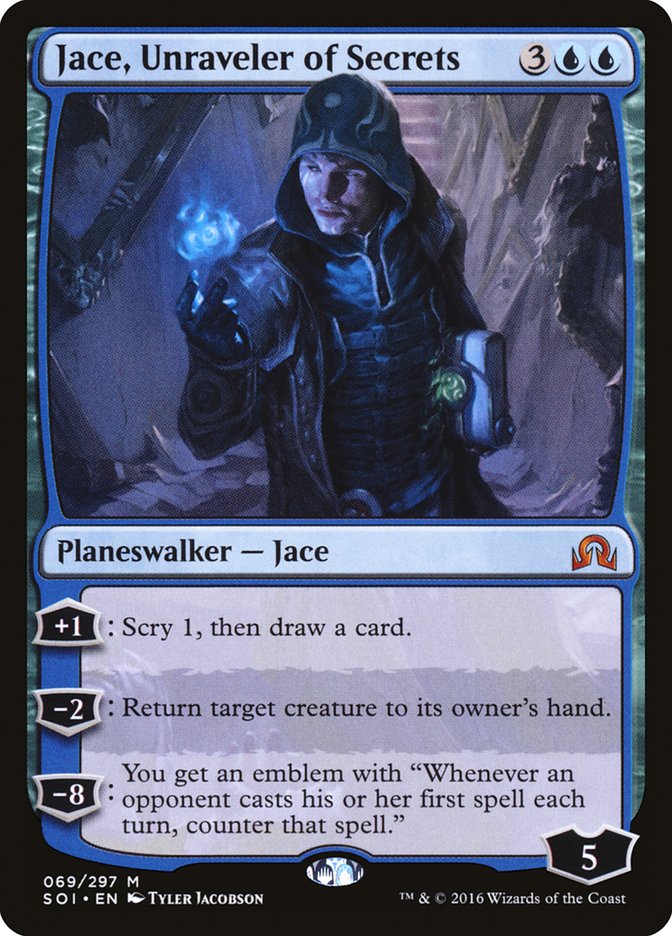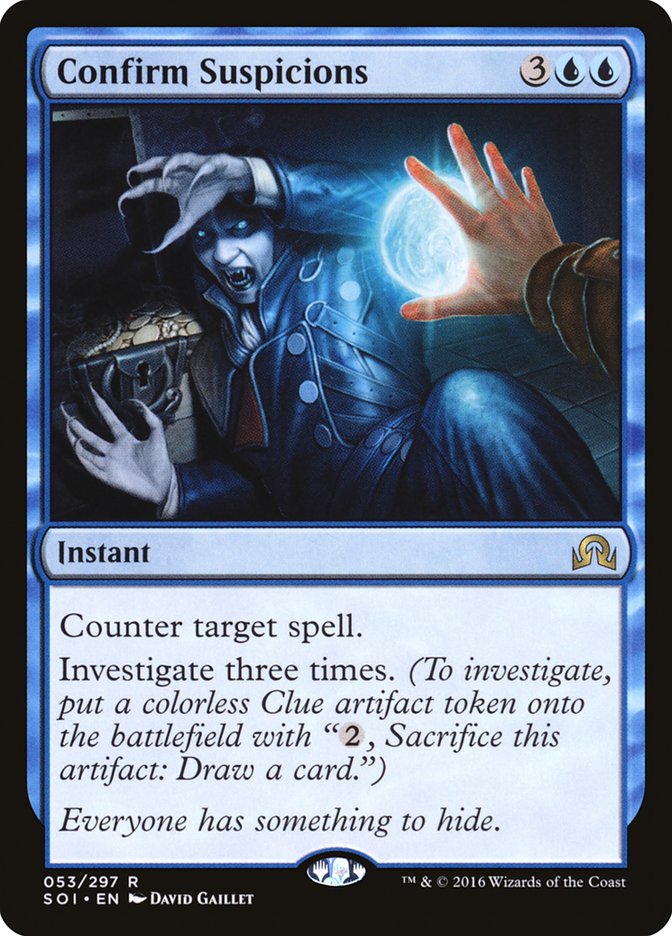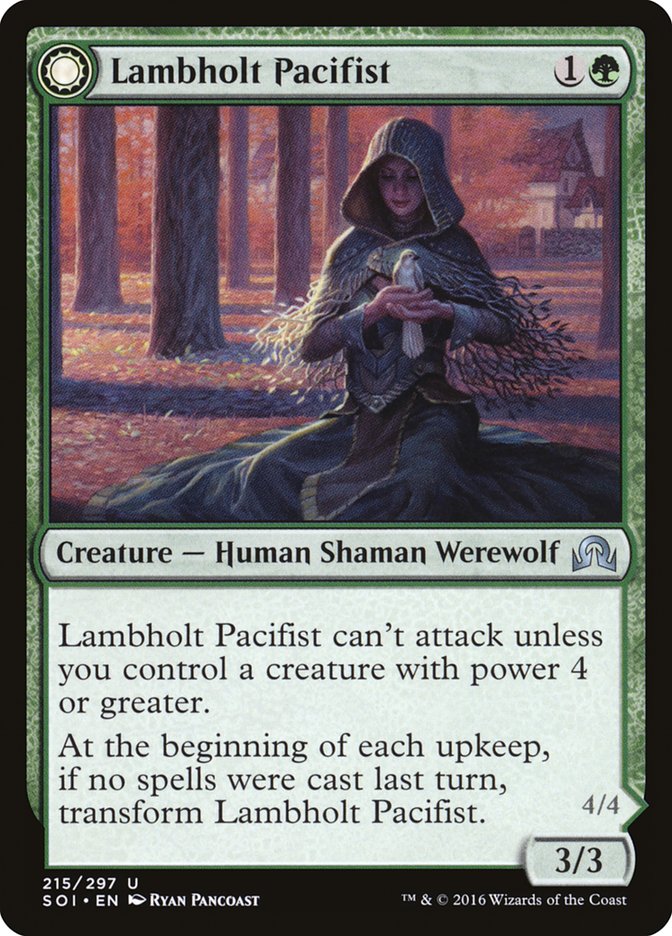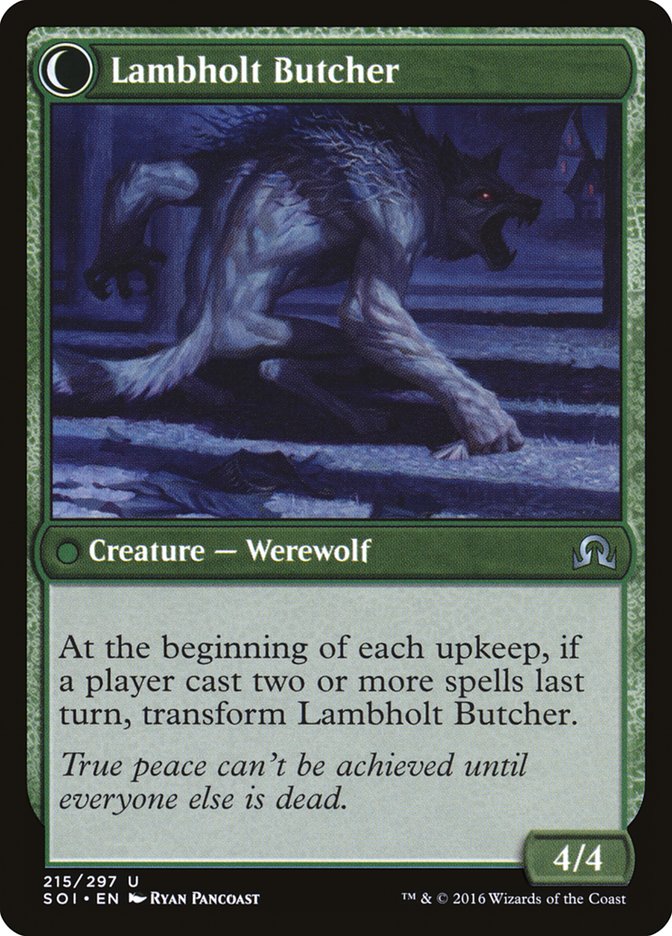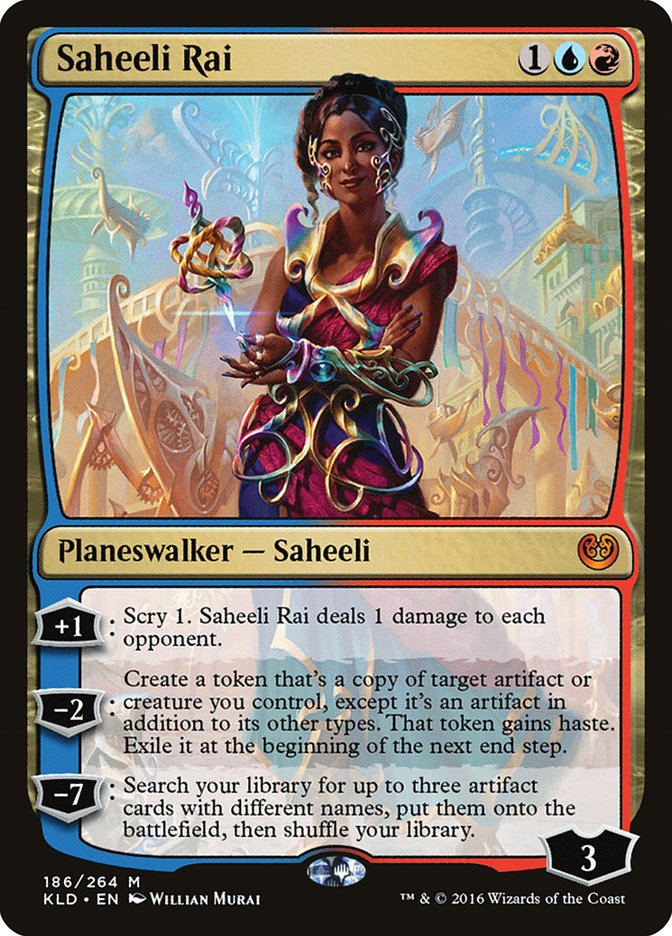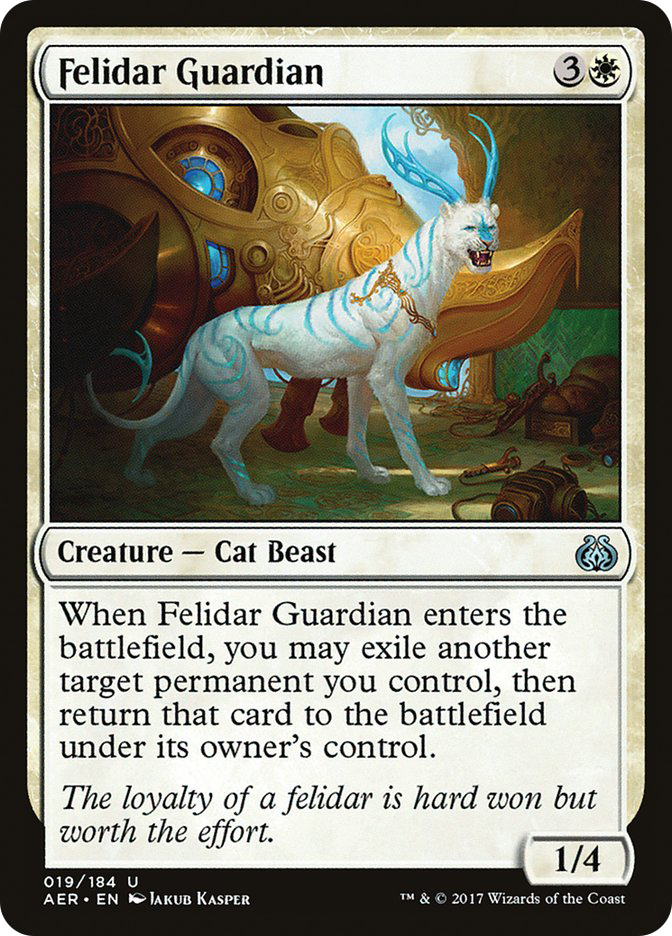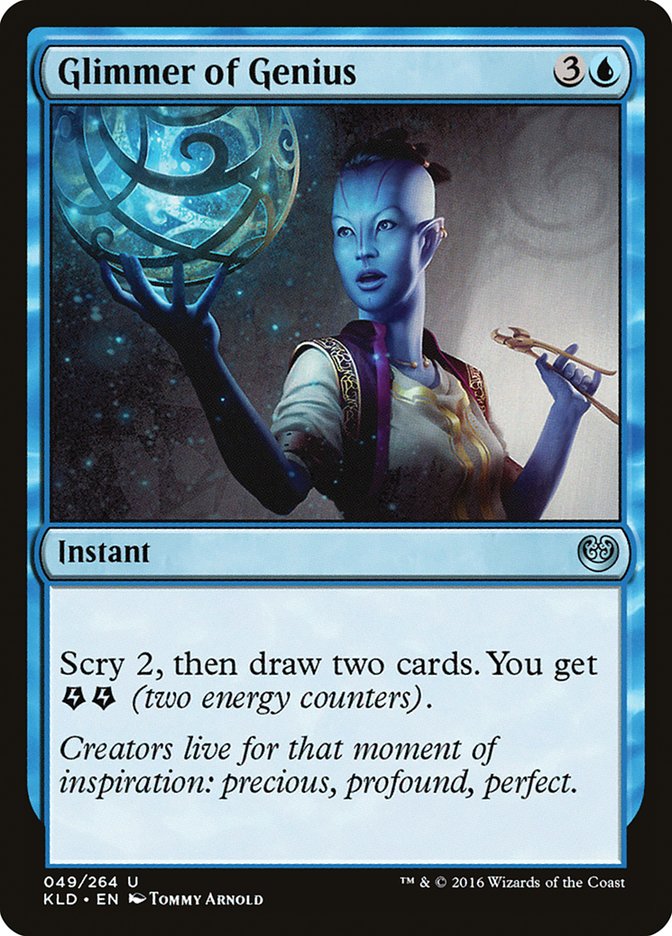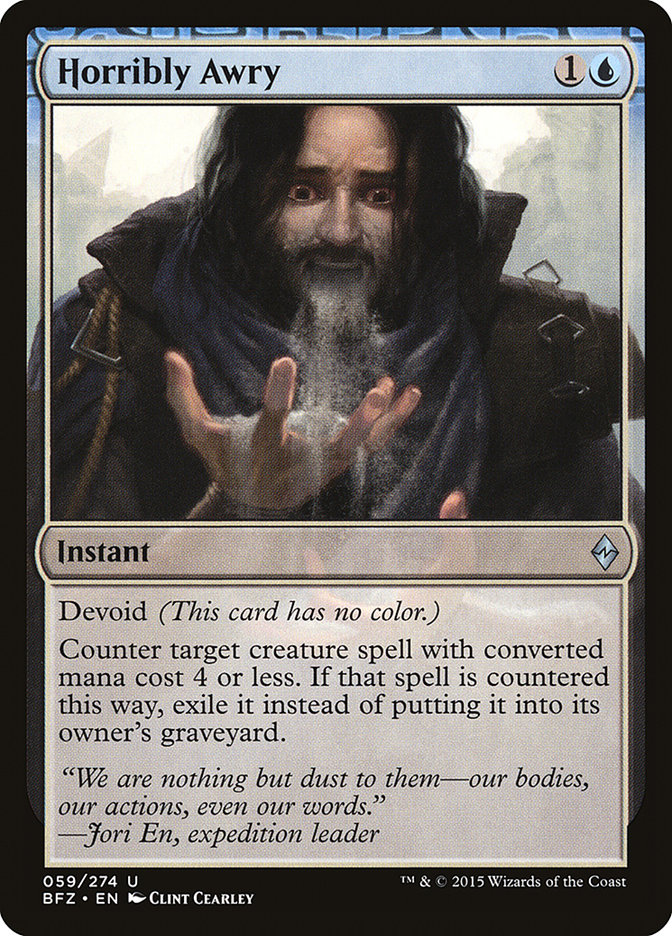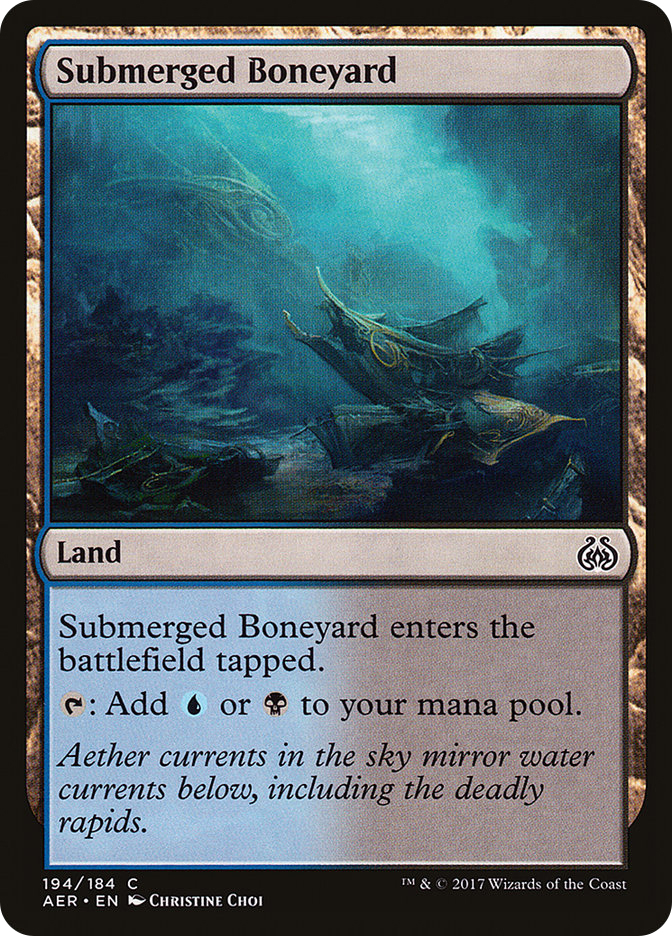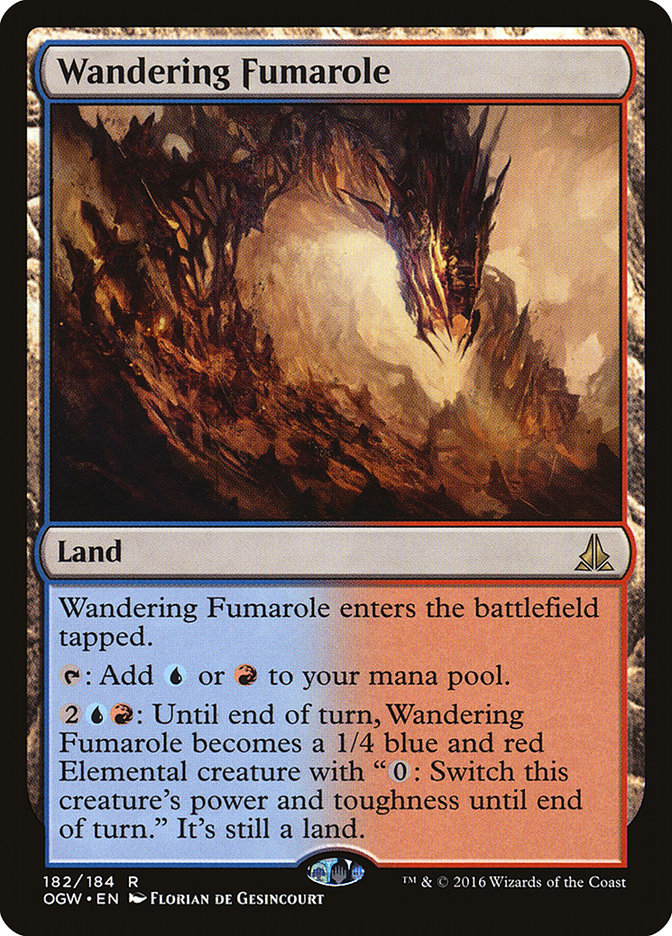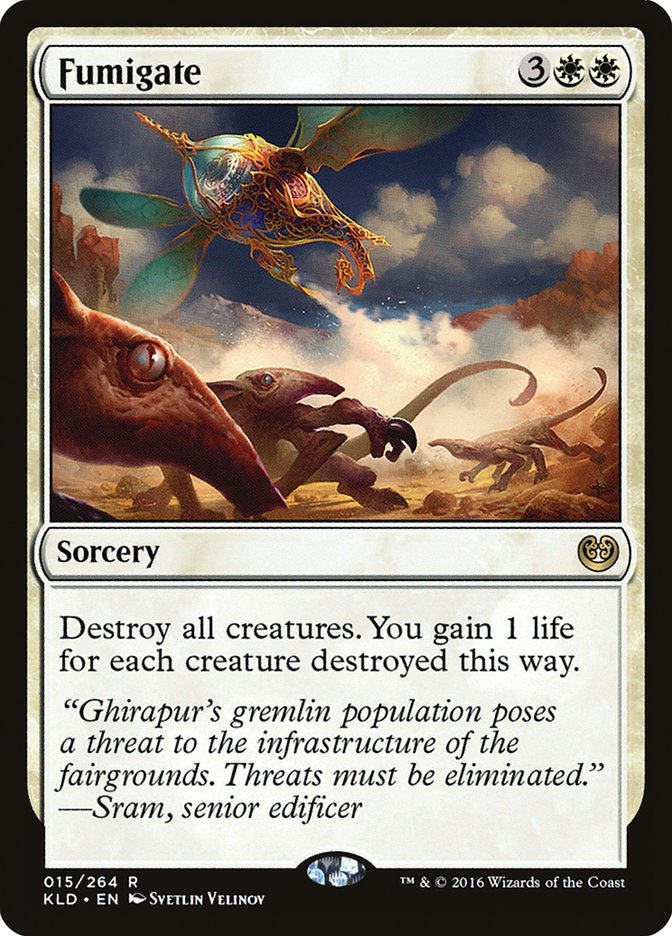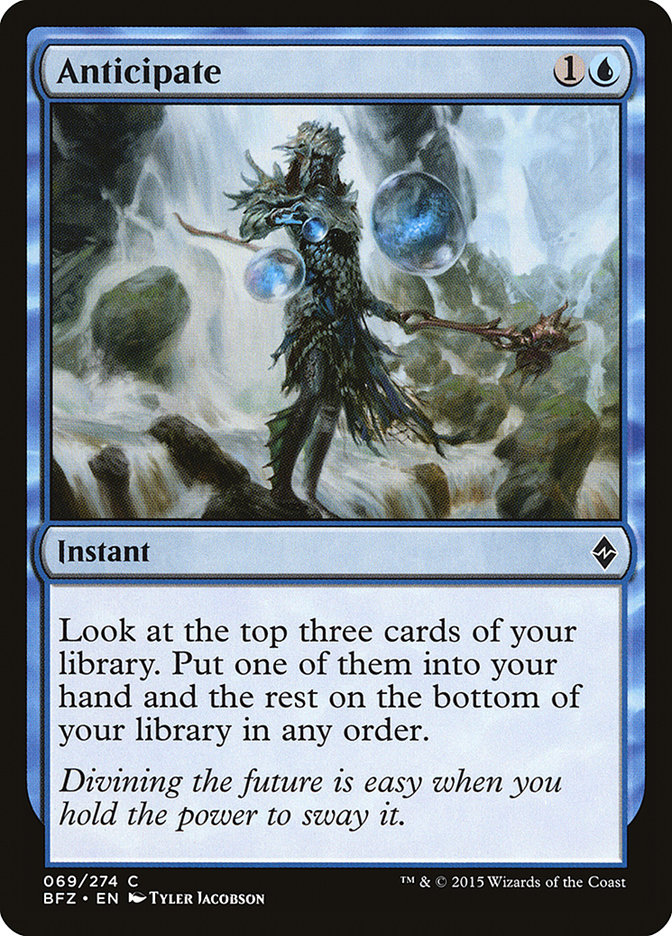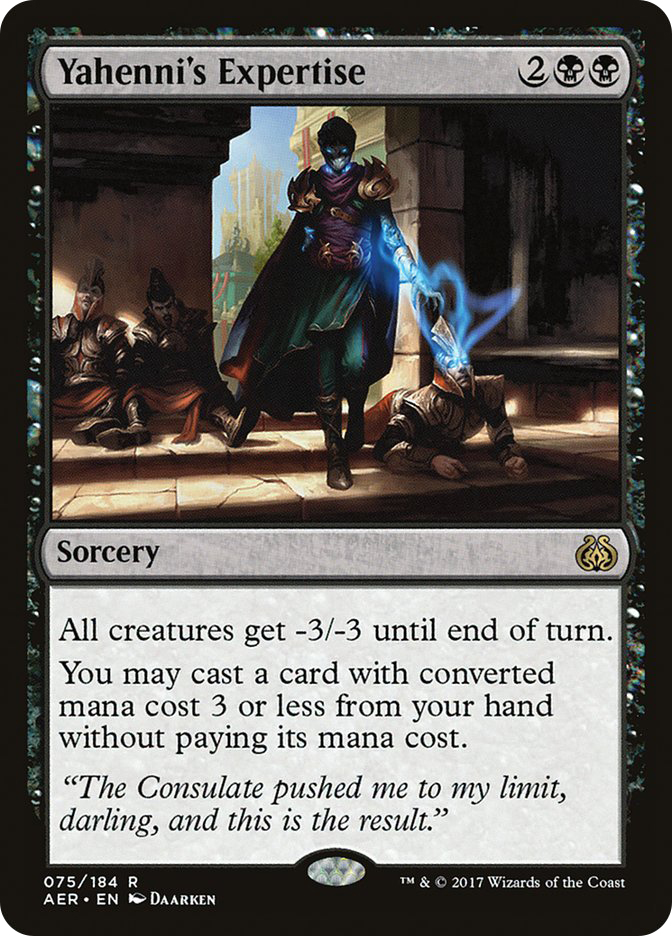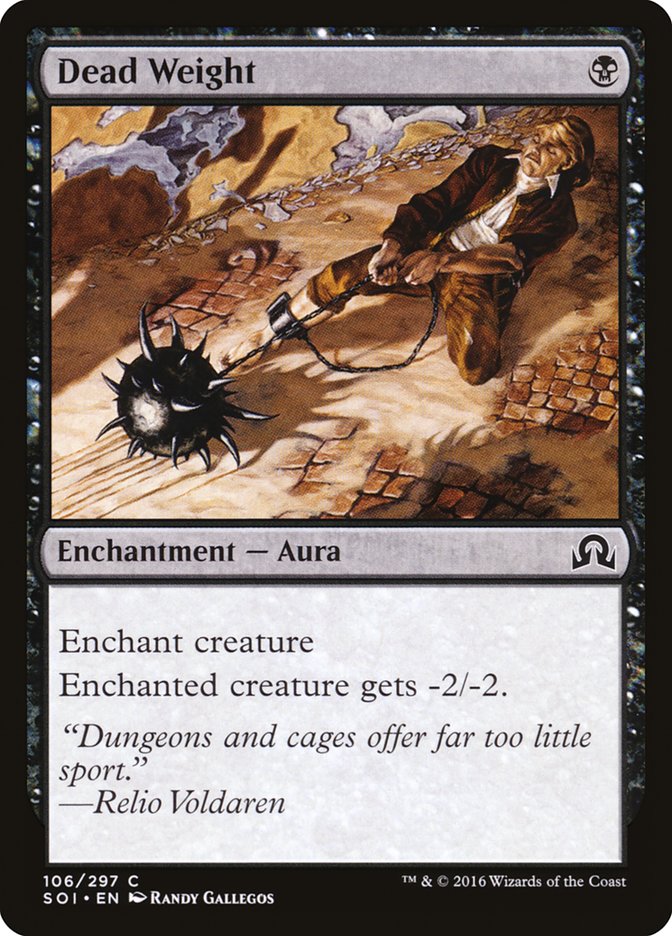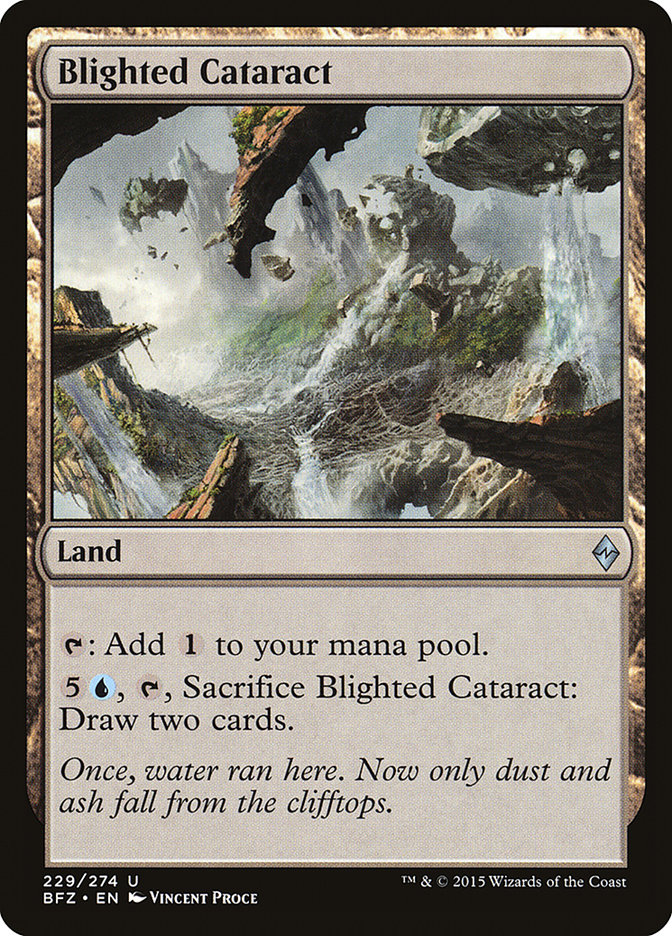Sometimes you just get the tingle.
At spellslinging the night before #SCGCOL, Dan Jessup was trying out and having success with the update to the Team MGG Esper Aggro deck we played at the #SCGINVI, while I was failing with an experiment at a low-to-the-ground Mardu Artifact Aggro deck with Bomat Courier and Key to the City.
Creatures (20)
- 4 Thraben Inspector
- 2 Thalia, Heretic Cathar
- 4 Spell Queller
- 2 Selfless Spirit
- 4 Scrapheap Scrounger
- 4 Toolcraft Exemplar
Planeswalkers (4)
Lands (24)
Spells (12)

Dan was super-happy with Metallic Rebuke and was locked in on playing the deck.
It seemed solid, but as I sat in my hotel room and the hour approached midnight, I heard a voice coming from the blue section of my blue BCW zipper binder.
The Muse
Jace: Jim… what are you doing? With Emrakul, the Promised End banned, you can finally play Torrential Gearhulk again like you really want to. Why aren’t you seizing this opportunity?
Me: Jace, I want to… I really do, but control just has it so rough right now. There are so many difficult-to-answer threats and not enough universal answers. What if my opponent resolves a Gideon, Ally of Zendikar? How can I deal with Scrapheap Scrounger?
Jace: Negate that Gideon. Horribly Awry that Scrapheap Scrounger. You know the answers are availabl;, you just lack the courage to bring them to the table.
Jim: Gideon just feels like the best card left in the format. I’m just going to play Dan’s Esper Aggro deck.
Jace: You want to play a version of a deck that had eight cards banned out of it? What are you, an idiot? You can’t properly replace Smuggler’s Copter or Reflector Mage!
Jim: I suppose that’s a good point…
Jace: And everyone is going to be trying to play the new Saheeli Rai plus Felidar Guardian combo, which will be comical to break up with our limitless counterspells and removal.
Jim: That’s also a pretty good point…
Jace: Don’t deny your destiny. Think about all we can do together— we can play an absurd amount of lands, draw cards during end steps with Glimmer of Genius, kill our opponent with only Torrential Gearhulk, and need to play pretty much perfectly at all times lest we fall behind… it will be glorious!
Jim: Can I play one Confirm Suspicions?
Jace: Jim, I’m literally the unraveler of secrets… I love Clues.
Jim: Okay. You’ve got me. I’m in.
Creatures (5)
Planeswalkers (1)
Lands (27)
Spells (27)

Jace tried to lead me to the promised land, but I failed in just one part of his prophecy:
“…and need to play pretty much perfectly at all times lest we fall behind…”
Oops.
The Mistake
There was a sloppy play here or there across my tournament, but the one that really killed me was in Game 3 of my win-and-in against Hunter Nance.
In Game 3, Hunter was on the play and led with a turn 2 Lambholt Pacifist. I drew a timely Fatal Push on my turn 2 draw steped but need to leave Negate mana open to counter a possible turn 3 Nissa, Voice of Zendikar. I played my second land and passed the turn back. Lambholt Pacifist flipped into Lambholt Butcher and attacked for four, and then Hunter deployed another Lambholt Pacifist and a land, and said go.
I end-step Fatal Pushed the Lambholt Butcher, took my turn, played another land, and passed, leaving up Negate again. This allowed the new Lambholt Pacifist to flip once again, ready to attack for four the following turn.
That all sounds pretty normal, right? Leave up counterspell mana, end-step the removal spell… all normal things for a control deck to do. The game went on for at many more turns, until I drew a Submerged Boneyard as my sixth land and needed to cast Ruinous Path while leaving open Disallow. With my shields down, Hunter was able to resolve Ajani Unyelding, which would cause the game to unravel over the next few turns and end in my defeat.
After the match Dan, Jessup would inform me of my rather elementary mistake.
If I had not cast Fatal Push on Hunter’s turn 3 end step and simply waited until my turn, played my third land, and cast Fatal Push while leaving open Negate, Hunter’s Lambholt Pacifist would not have flipped. This would have saved me between four and eight damage, and likely given me the buffer I would have needed to leave the shields up.
Not a very complicated mistake, but one that lays out what you sign up for when you play a control deck like this. Any minor misstep can and will spiral wildly out of control as the game goes on, and you must play extremely carefully. Every game often rests on the edge of a knife, and it’s a tough line to walk.
If you’re ready to walk the walk, though, let’s look at why U/B Control is viable again.
The Bannings
U/B Control doesn’t gain a ton of new cards from Aether Revolt. What brings it back to viability in Standard is almost entirely tied to the last banned and restricted list update.
While Emrakul, the Promised End was legal, no other late-game could compete. Trying to stem the tide of Emrakul with counterspells or traditional removal was fruitless, and Emrakul would inevitably arrive and undo an entire game’s worth of work. We already know all this, but it couldn’t be more impactful to long-game control decks like U/B Control and other Torrential Gearhulk decks.
With the ultimate endgame of the format removed, we are once again free to play one of the most powerful control end-game cards in years. Torrential Gearhulk is so good, it brings up a somewhat middling support cast from just okay to quite formidable.
While nothing is more important that the exodus of Emrakul, the other bannings were also beneficial to Torrential Gearhulk control decks.
Removing Smuggler’s Copter removes an extremely high-quality threat from the format, thereby making everything else in the format better by comparison. Smuggler’s Copter was often difficult for a control deck to interact with, as a savvy opponent could pick the correct spots to activate (or, more importantly, not activate) it to play around your removal.
Just a major net positive for all decks in the format.
But Jim, how does the banning of Reflector Mage make control better? Reflector Mage is awful against control decks.
Very simple, my friend:
Banning Reflector Mage allows players to once again pick up creatures like Mindwrack Demon. These large and powerful three- to five-mana sorcery-speed threats were previously unplayable with Reflector Mage always looming and are also very poor against a deck with two- and three-mana counterspells.
If you want to play a control deck, you want your opponent to be playing objectively powerful four-drops like Mindwrack Demon, as it plays right into your plan.
The Combo
The other big reason control is viable again is the emergence of the Saheeli Rai plus Felidar Guardian combo.
It’s really not complicated.
If your opponent wants to assemble a sorcery-speed combo involving a creature and your deck is packed with counterspells and removal, you’re going to be in pretty good shape. A control deck naturally interacts with the combo so well Game 1 that you have a huge advantage against decks of this nature.
The Cards
A lot of the cards in the deck are fairly obvious. Draw cards, kill stuff, counter spells, repeat until your opponent has nothing left and you kill them with Torrential Gearhulk.
Torrential Gearhulk and Glimmer of Genius are the best two cards in the deck by a mile, as they are the cards that let you get ahead on cards and overwhelm your opponent. The games you don’t draw Glimmer of Genius can be difficult, as you sometimes risk drawing a pocket of land when your opponent draws a row of spells and falling behind.
As such, there’s a need for additional pieces of card advantage:
Confirm Suspicions is not the most mana-efficient card ever printed, but it is a straight-up four-for-one at a reasonable rate. It is also phenomenal off Torrential Gearhulk, providing you with the late-game value you need. How many copies of the card you can play will depend on the metagame, but two does not seem unreasonable. We don’t have something like Sphinx’s Revelation or even Jace’s Ingenuity to gas us up, so Confirm Suspicions will have to do.
Jace, Unraveler of Secrets gets the nod over Ob Nixilis Reignited because life is at a premium. The deck has almost no ways to gain life, and we plan on drawing many cards off our planeswalker in a long game. Once Jace is on the battlefield, bouncing is almost as good as killing, and bouncing your own Torrential Gearhulk for access to a counterspell or removal is a common line.
The deck definitely wants at least one more card advantage engine, which will likely be the second Jace.
The lack of a card like Clash of Wills necessitates this duo of conditional counterspells. Negate being so good overall in the format is a large part of why this deck is playable. There are a wide variety of noncreature threats in the format, and Negate handles them all at a very cheap and easy-to-cast mana cost. Planeswalkers will always be an issue for a control deck like this, and Negate is one of the best answers you can bring to the table.
Horribly Awry is quite a bit more restrictive, but answering two-drops is so important in maintaining the tempo of the early-game that it is a necessity. It also provides a clean answer to Scrapheap Scrounger, one of the more annoying threats in the format for the deck.
Submerged Boneyard is not a fantastic land, but having a removal spell that costs BB and a counterspell that costs 1UU and trying to play them on-curve requires at least one land that can tap for blue or black in the first three turns of the game. The eight copies of Choked Estuary and Sunken Hollow are not enough to ensure that, so we get to play a few Submerged Boneyard to pick up the slack.
The Omissions
Almost as important as what is in the deck is what is not.
Adding a third color looks attractive until you realize that our two-color manabase has issues often enough that we need to play Submerged Boneyard in our deck. Grasp of Darkness is one of the best removal spells in the format, but it does ask a lot.
A three-color control deck with red as your removal color for Harnessed Lightning may be doable, but losing Kalitas, Traitor of Ghet and the black removal suite is too much of a loss.
Anticipate is perhaps one of the most universally overplayed cards in Standard.
If you are playing Anticipate because you are looking to assemble a two-card combo or because you are looking for a cantrip spell to help trigger Dynavolt Tower or Thing in the Ice, you are getting enough value out of the card to make it worth it. If you are just playing it to look for another good card, you are wasting your time and mana in a deck that values those things above all else.
The first five turns of any game are the most important for a control deck like U/B Control. It is vital that you maintain control of the battlefield and answer threats as your opponents present them. There is no time to cast an Anticipate to look for an answer, and doing so will likely result in your falling behind. Playing too many Anticipates leaves you looking at hands like this:
Turn those Anticipates into a land and a two-mana spell and we’ve got a solid hand. In slower formats, something like Anticipate is okay because you have time to durdle around, but in a format with so many powerful singular threats and planeswalkers that cost between two and four mana, you must spend each early turn interacting.
If you want to make sure you hit your land drops, play more lands. If you want to have more answers in your deck, play more answers.
My only fear for the deck is that Glimmer of Genius is so important that we may need to play an Anticipate or two to help find it in the mid-game, but if that’s the case, it’s possible the deck just isn’t powerful enough to play without Glimmer of Genius. I’d rather find another solution.
Yahenni’s Expertise is no Damnation, and even if it were, sweepers in this format are so poor that we probably wouldn’t play that many. If Yahenni’s Expertise always came attached with Ruinous Path to deal with Gideon, Ally of Zendikar, you could get me interested, but with Gideon being one of the premier threats in the format, Yahenni’s Expertise doesn’t answer it and leaves me vulnerable to it.
There are too many things, from Vehicles to planeswalkers to large creatures, that Yahenni’s Expertise does not kill to make it an effective answer to the format. In some metagames it could be a fine sideboard card, but not with the metagame as it stands. Our plan against aggressive decks is cheap removal and Kalitas, Traitor of Ghet to retain parity and take the game over.
The Sideboard
Building a sideboard for Week One of a format is pretty tough, as you often have to just hedge for all the possible things you may face. Most of the sideboard is fairly obvious, but there are view important things.
“Kalitas, Traitor of Ghet plus one-mana removal spells” is your plan against any aggressive deck. Survive until turn 5 and then cast Kalitas and a removal spell in the same turn. If they have an answer, you’ve gained a lot of tempo. If they don’t, they lose.
Perhaps the oddest card in the sideboard, Blighted Cataract is one of your best tools in control or combo mirrors. You can’t afford to ever miss a land drop, so going up to 28 lands is where you want to be. You also don’t want to get zero value from your lands or flood too hard in the late-game, so Blighted Cataract gives you the best of both worlds.
The Update
With these lessons learned and a better view of the metagame after #SCGCOL, we arrive here:
Creatures (6)
Planeswalkers (2)
Lands (27)
Spells (25)

A little more power in the maindeck, a cleanup of the removal and counterspell suite, and a slight fix to the manabase.
The Guide
The format is still coalescing, but here is a rough sideboard guide to work from. Sideboarding with a control deck like this is more of an art than a science, based both on your opponent’s decklist and how they play the game.
G/W Tokens
In:
Out:
Fatal Push isn’t effective against planeswalkers but paramount for answering early threats in a tempo-positive manner. Your end-game revolves around Kalitas, Traitor of Ghet, who can allow you to play straight-up against their planeswalkers. Do everything you can to not allow an early planeswalker to resolve.
Mardu Vehicles (and aggro in general)
In:
Out:
Everything revolves around staying alive early and sticking a Kalitas, Traitor of Ghet. Use your Negates to defend against Gideon, Ally of Zendikar and protect Kalitas. Expensive counterspells make way for cheap removal, making this a good matchup.
G/B Aggro and B/G Delirium
In:
Out:
I did not play against G/B Aggro at #SCGCOL, but it seems like a pretty good matchup. They aren’t as fast as some of the more aggressive decks and lack planeswalkers and the more sticky threats. You should be able to one-for-one them into oblivion and take over the game with Kalitas or Torrential Gearhulk.
Jeskai Saheeli
In:
Out:
There’s so much variety in the Saheeli Combo lists that it’s hard to give a definitive guide. You want all of your countermagic and want to cut sorcery-speed threats if possible. You need to cut some amount of removal, but not all. They may have Spell Queller, and you still need to answer potential Torrential Gearhulks and Wandering Fumaroles. Season to taste.
The Wrap-Up
This is not the best deck in the format. Your games are going to be tough and you will have no easy wins. You lack a card like Gideon, Ally of Zendikar to just take over games, and there will be times your spells just don’t line up and you get run over. Still, Torrential Gearhulk is a hell of a card, and control is quite well-positioned at the moment. If you are up to the task, this deck definitely has what it takes.
If you like laying a land and saying go every single turn for many turns in a row, I shouldn’t even have to convince you. Just make sure you draw Submerged Boneyard on turn 1 and not later in the game!


